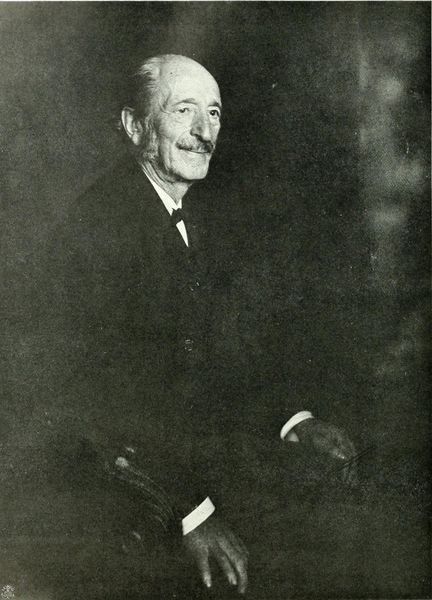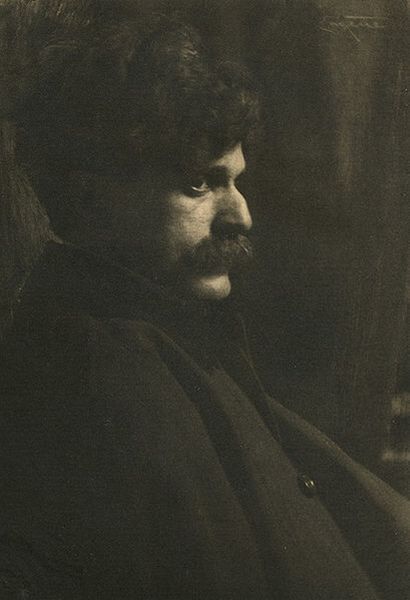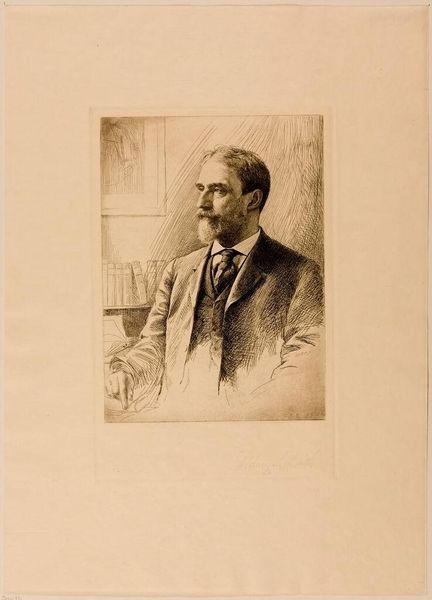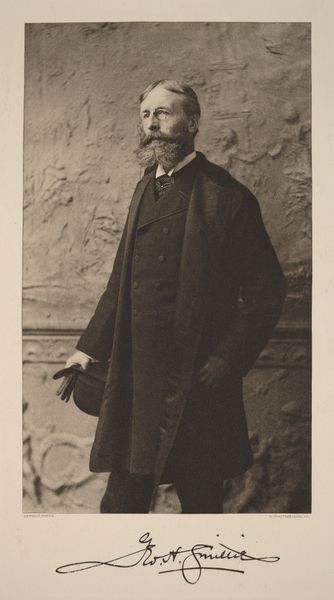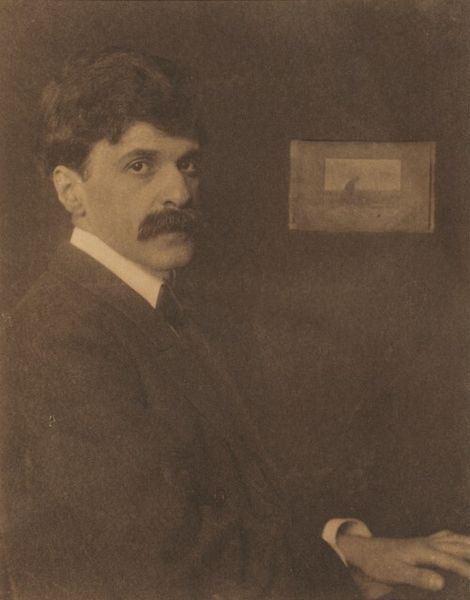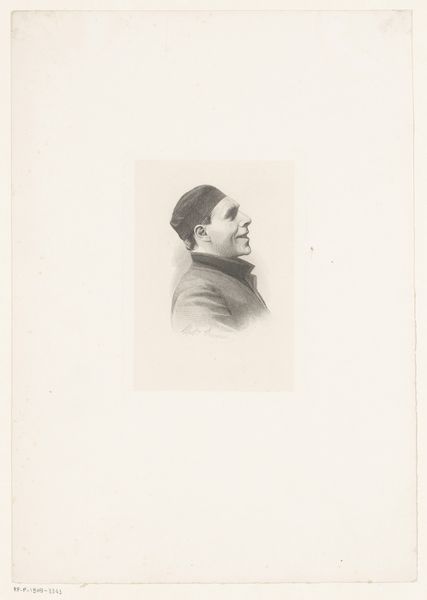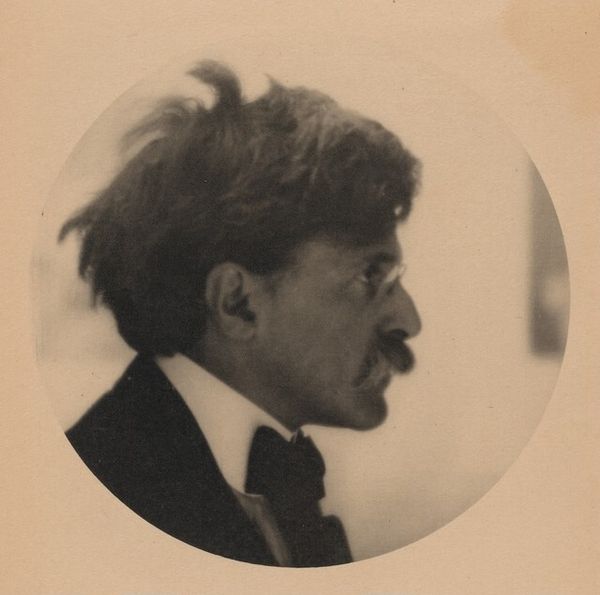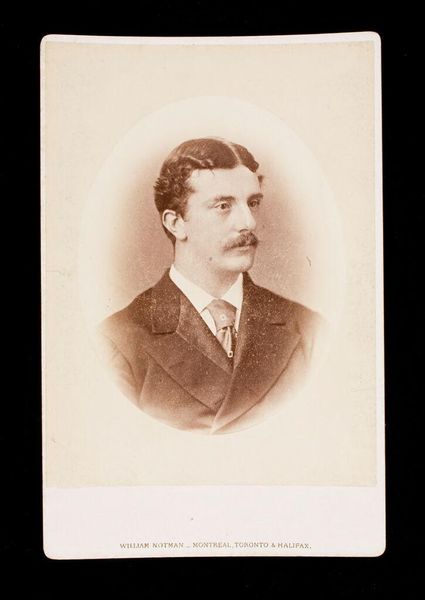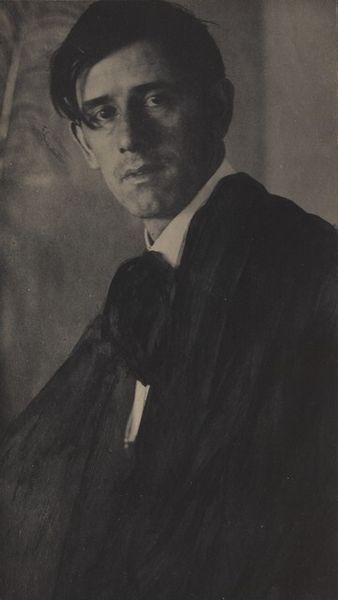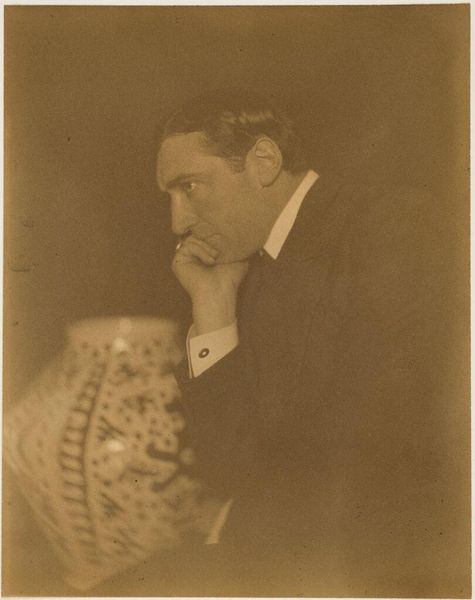
Copyright: Public domain
Curator: Let's spend a moment with Gertrude Käsebier's "Portrait of Robert Henri" from 1907, a gelatin-silver print. There's so much texture happening—almost painterly. What jumps out at you? Editor: Ah, the melancholy! It feels like stepping into a whispered conversation. It’s dark, brooding almost, yet that single light on his hands… it's quite hopeful, no? It's so soft, almost blurred at the edges; like a memory trying to surface. Curator: Exactly. Käsebier, along with other Pictorialists, consciously employed techniques such as soft focus and manipulation of the print surface, in part, to elevate photography's status and mimic the qualities of painting and printmaking. Editor: That's interesting—how the ‘soft focus’ technique mirrors the subject matter somehow. He himself, as an artist, probably struggled against boundaries! Did he? I think it's wonderfully clever of Kasebier if that's the case—material reflecting meaning! Curator: It is apt, I think, given Henri’s position at the forefront of the Ashcan School, challenging the establishment, both through subject matter but also, and significantly, artistic labor and exhibition practices. Käsebier also straddled these traditional and avant-garde approaches in her business as a portraitist. Editor: He almost seems caught, or rather, trapped. But not entirely. I mean, there's light there! Is it wishful? I keep thinking of that phrase ‘caught in the headlights’. Though the only ‘headlight’ is his potential… a very pensive picture. The softness suits it beautifully. There's something deeply romantic about this aesthetic—all about atmosphere, suggestion. Curator: Yes, the print work adds to that feeling, and it contrasts interestingly with Henri's own focus on the gritty realism of modern urban life as source material. It shows how Käsebier's perspective offers us more than meets the eye regarding the making of artists and aesthetics, particularly given how labor informs art practices. Editor: Indeed. You know, it’s amazing how a photograph—especially one from so long ago—can still stir up such feelings and contemplation. It makes one appreciate the material aspect of such poignant work! Curator: Precisely. This photograph offers us rich insights into social relations, photographic materials, and the work of art itself, all enmeshed.
Comments
No comments
Be the first to comment and join the conversation on the ultimate creative platform.
